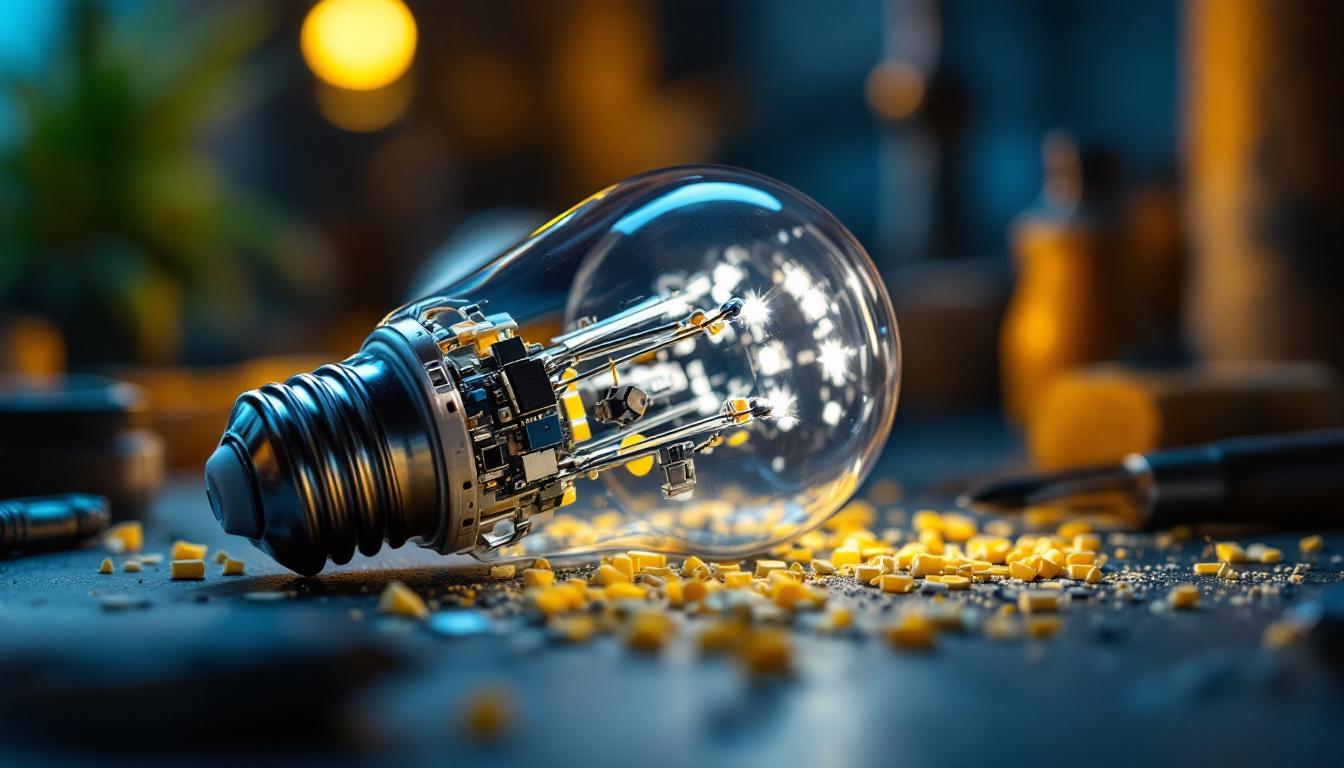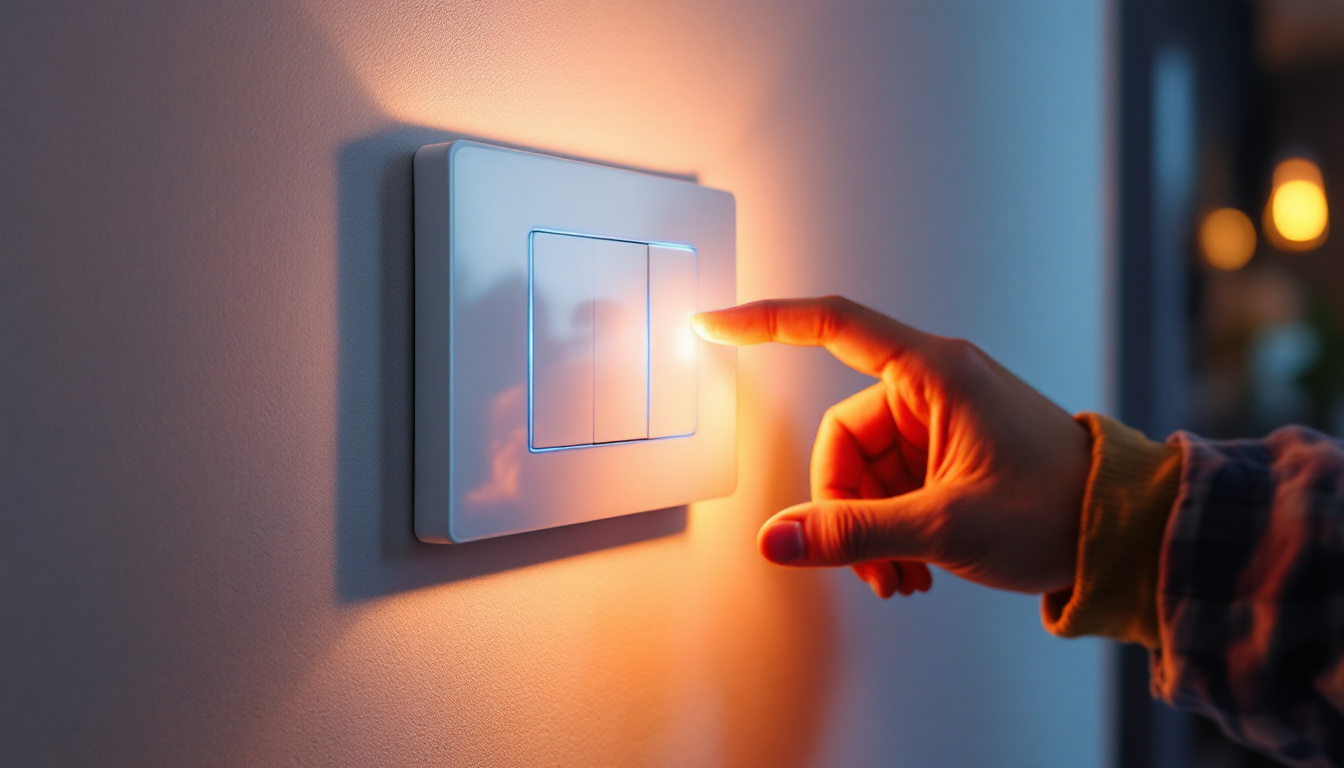
In the ever-evolving world of lighting technology, LED bulbs have emerged as a game-changer for both consumers and contractors. Understanding the intricate components of LED bulbs can provide lighting contractors with a significant edge in their bids. This article delves into the internal structure of LED bulbs and explores how this knowledge can enhance the bidding process for lighting contractors.
LED, or Light Emitting Diode, bulbs are widely recognized for their energy efficiency and longevity. Unlike traditional incandescent bulbs, which generate light through heat, LEDs produce light through a process called electroluminescence. This fundamental difference not only affects energy consumption but also impacts the overall performance and lifespan of the bulbs. As a result, LED technology has become the preferred choice for both residential and commercial lighting solutions, providing brighter illumination while consuming a fraction of the energy.
To fully appreciate the advantages of LED technology, it is essential to understand the core components that make up an LED bulb. These components work together to create a reliable and efficient lighting solution. Each part plays a critical role in ensuring that the bulb operates effectively, contributing to its overall performance and durability.
Understanding the components of LED bulbs not only helps contractors in technical discussions but also highlights the numerous benefits of using LEDs. These advantages can be pivotal when bidding on projects. The growing demand for energy-efficient solutions has made LED technology a focal point in modern lighting design, and its benefits extend beyond mere energy savings.
Moreover, LED technology has advanced significantly over the years, leading to innovations such as smart LEDs that can be controlled remotely via smartphones or home automation systems. These smart bulbs not only offer convenience but also allow users to customize their lighting preferences, enhancing comfort and ambiance in any space. Furthermore, the ability to integrate LED lighting with renewable energy sources, such as solar power, underscores the adaptability and future-proof nature of this technology, making it an ideal choice for eco-conscious consumers and businesses alike.
When discussing LED lighting, two critical factors often come into play: color temperature and Color Rendering Index (CRI). Understanding these concepts can help contractors make informed recommendations to clients.
Color temperature, measured in Kelvin (K), describes the appearance of the light emitted by a bulb. It ranges from warm white (around 2700K) to cool white (above 5000K). Each temperature creates a different ambiance and can influence the mood of a space.
For instance, warm white light is often preferred in residential settings for its cozy feel, while cooler temperatures are favored in commercial environments where clarity and focus are essential. By understanding these preferences, contractors can tailor their proposals to meet the specific needs of their clients. Additionally, the choice of color temperature can significantly affect the perceived size and warmth of a room; warmer tones can make a space feel more intimate, while cooler tones can create a sense of openness and airiness. This knowledge allows contractors to not only address functional lighting needs but also to enhance the overall aesthetic appeal of a project.
CRI is a measure of a light source’s ability to accurately render colors compared to natural light. A higher CRI (close to 100) indicates better color accuracy. This aspect is particularly important in settings such as art galleries, retail spaces, and photography studios, where color fidelity is crucial.
Lighting contractors can leverage their knowledge of CRI to recommend the most suitable LED products for different applications, thereby enhancing their credibility and increasing their chances of winning bids. Furthermore, it is essential to consider that the perception of color can also be influenced by the surrounding environment, including wall colors and furnishings. For example, a high CRI light may look different in a room with dark walls compared to one with light walls. Therefore, contractors should encourage clients to consider the entire context of the space when selecting lighting solutions, ensuring that the final choice not only meets technical specifications but also harmonizes with the overall design vision.
In a competitive market, understanding the intricacies of LED technology can significantly impact a contractor’s ability to secure projects. Here are several ways this knowledge can be leveraged to win more bids.
Clients often seek contractors who demonstrate a strong understanding of the products they are proposing. By showcasing expertise in LED technology, including the internal components and their benefits, contractors can instill confidence in potential clients.
Technical proficiency not only helps in answering client queries but also positions the contractor as a knowledgeable partner in the project, which can be a deciding factor in the bidding process.
When bidding on projects, highlighting the cost-effectiveness of LED solutions can be a game-changer. By presenting a clear comparison between the initial investment in LED technology and the long-term savings on energy bills and maintenance, contractors can make a compelling case for their proposals.
Clients are often more inclined to invest in solutions that promise lower operational costs over time, and this understanding can help contractors secure more contracts.
LED technology offers a wide range of options in terms of design, color temperature, and brightness levels. This flexibility allows contractors to customize their proposals to meet the specific needs of each project.
By emphasizing the ability to tailor lighting solutions, contractors can appeal to clients looking for unique and innovative designs, thereby increasing their chances of winning bids.
When presenting LED solutions, contractors often encounter common concerns from clients. Addressing these issues effectively can further strengthen a contractor’s position in the bidding process.
One of the most frequent concerns clients have is the initial cost of LED bulbs compared to traditional lighting options. While the upfront investment may be higher, contractors can articulate the long-term benefits, including energy savings, reduced maintenance, and longer lifespan.
Providing a detailed cost analysis can help clients see the bigger picture and understand the value of investing in LED technology.
Clients may also question the quality and performance of LED lighting. By showcasing reputable brands and providing performance data, contractors can alleviate these concerns. Demonstrating successful case studies or testimonials from previous clients can further enhance credibility.
Additionally, offering product warranties can provide clients with peace of mind regarding the longevity and reliability of the proposed solutions.
The lighting industry is constantly evolving, with new technologies and trends emerging regularly. Staying informed about these developments can provide contractors with a competitive advantage in their bids.
Smart lighting is one of the most significant trends in the industry. Integrating LED technology with smart controls allows for enhanced energy management and user convenience. Understanding how to implement these solutions can set contractors apart from their competitors.
By offering smart lighting options, contractors can appeal to tech-savvy clients who prioritize innovation and efficiency. This not only increases the chances of winning bids but also positions the contractor as a forward-thinking leader in the industry.
As sustainability becomes a focal point in various industries, understanding energy regulations and eco-friendly practices is essential. Contractors who can demonstrate compliance with these regulations and offer sustainable lighting solutions are more likely to win bids.
By highlighting the environmental benefits of LED technology, contractors can align their proposals with the growing demand for sustainable practices, making them more attractive to clients.
In conclusion, understanding what is inside an LED bulb and how it functions can significantly benefit lighting contractors in the bidding process. By leveraging this knowledge, contractors can enhance their technical proficiency, address client concerns, and stay ahead of industry trends.
As the demand for energy-efficient and sustainable lighting solutions continues to grow, contractors who embrace the advantages of LED technology will not only improve their chances of winning more bids but also establish themselves as trusted partners in the lighting industry.
Ready to elevate your lighting game and outshine the competition? At LumenWholesale, we’re committed to helping you win more bids with our premium, spec-grade lighting products. Take advantage of our unbeatable wholesale prices and extensive selection that meets the highest industry standards. Say goodbye to middleman markups and hello to hassle-free bulk buying with free shipping. Don’t compromise on quality or value. Make your next project a beacon of efficiency and innovation with LumenWholesale. Discover the perfect blend of quality, affordability, and convenience. Wholesale Lighting at the Best Value is just a click away.

Explore the rising significance of the 15W Type B bulb in the lighting industry.

Discover the key challenges lighting contractors face with emergency lights batteries, from maintenance hurdles to technological advancements, and learn strategies to overcome these obstacles for optimal performance and safety..

Explore the fascinating evolution of lighting before the invention of the light bulb.

Discover why lighting contractors should prioritize installing light switches specifically designed for LED lights.